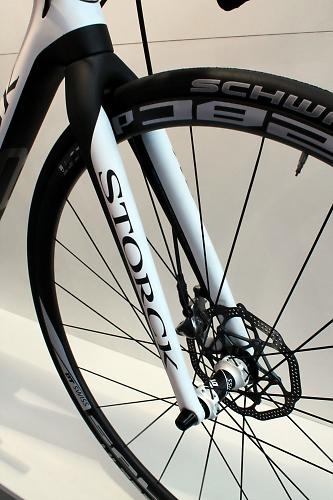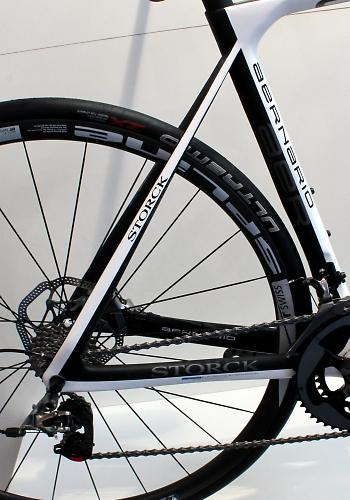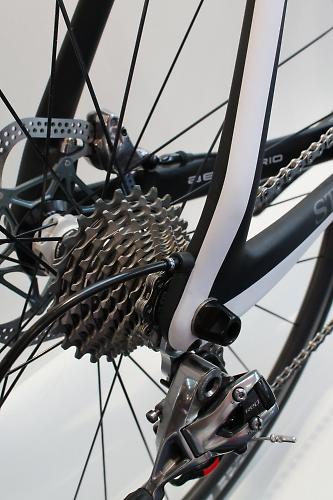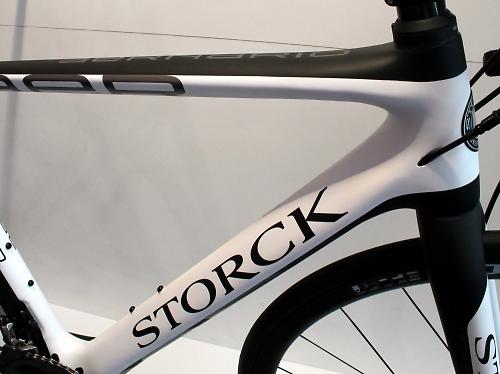- News
- Reviews
- Bikes
- Accessories
- Accessories - misc
- Computer mounts
- Bags
- Bar ends
- Bike bags & cases
- Bottle cages
- Bottles
- Cameras
- Car racks
- Child seats
- Computers
- Glasses
- GPS units
- Helmets
- Lights - front
- Lights - rear
- Lights - sets
- Locks
- Mirrors
- Mudguards
- Racks
- Pumps & CO2 inflators
- Puncture kits
- Reflectives
- Smart watches
- Stands and racks
- Trailers
- Clothing
- Components
- Bar tape & grips
- Bottom brackets
- Brake & gear cables
- Brake & STI levers
- Brake pads & spares
- Brakes
- Cassettes & freewheels
- Chains
- Chainsets & chainrings
- Derailleurs - front
- Derailleurs - rear
- Forks
- Gear levers & shifters
- Groupsets
- Handlebars & extensions
- Headsets
- Hubs
- Inner tubes
- Pedals
- Quick releases & skewers
- Saddles
- Seatposts
- Stems
- Wheels
- Tyres
- Health, fitness and nutrition
- Tools and workshop
- Miscellaneous
- Cross country mountain bikes
- Tubeless valves
- Buyers Guides
- Features
- Forum
- Recommends
- Podcast
TECH NEWS
Storck unveil Aernario Disc at Eurobike + video
Disc brakes were the major talking point at Eurobike. Will or won’t they be the future of road bikes? Will the UCI ever approve them? And just how many manufacturers will adopt discs in their road bike range? There were quite a few, as it turns out. One of the most significant bikes is Storck’s Aernario Disc.
While most disc brakes have been appearing on road bikes intended to offer versatilty of function or following the endurance/comfort design blueprint, this is a fully fledged high performance road bike that goes well below the UCI's 6.8kg weight limit. This, in my opinion, is the future of road bikes.
With its bolt-through axles front and rear, hydraulic disc brakes, aero carbon frame and 6.3kg weight, it points to a future where disc brakes can offer a performance advantage. Storck have always been at the forefront of carbon technology, producing some of the lightest bikes since they launched in 1995. The new Aernario Disc has been a complete ground-up redesign and a key feautre is the use of bolt-through axles at both ends.
What are bolt-through axles? They are a large diameter hollow axle which thread into the enclosed dropout. They’re commonplace on mountain bikes where long travel suspension has seen them become a necessity with the extra forces involved. We saw a few road bikes with them at Eurobike, but the majority of the disc road bikes had regular quick release axles.
The key advantage, Markus Storck explained to us, is the extra stiffness they offer. They allow the fork and rear stays to be designed with fewer layers of carbon fibre, because the axles provide a lot of the necessary stiffness. So there's less carbon in the sides of the fork legs and in the seatstays and chainstays.
That's good because it helps to keep the weight down. The frame is 940g – about 40g heavier than the regular Aernario – while the fork is about 440g – a 100g increase. With regular quick release axles the weight penalty would have been higher simply due to the fact that more carbon would have been necessary.
A side benefit to the disc brakes, according to Markus, is that the ride comfort can be tuned. The rear stays are already very slender and with the absence of a few layers of carbon because of the beefed up axle, and the removal of the brake bridge, the stays can actually offer more vibration damping. Ride comfort is a quality that is increasingly being sought with the advent of the ‘endurance’ road bike category.
All that, and the Aernario Disc is an aero bike too. The down tube profile, a rounded frontal surface area with a teardrop tail, was developed using CFD (computational fluid dynamics) software. This cross-section, which they call ‘Sectional Aerodynamic’, has also been designed to provide vibration damping while still maintaining a high level of stiffness.
Other aero nods include the integrated seat clamp and internally routed cables and hydraulic hoses. The frame is compatible with both mechanical and hydraulic disc brake systems.
So, one of the most interesting road bikes at the show and one I'm keen to ride as soon as I get the chance. Disc brakes on road bikes are clearly a devisive subject, based on the feedback from road.cc readers. Markus sees a future where disc brakes will be offered alongside caliper rim brakes, giving cyclists the choice to pick the braking system they want. This is echoed by Colnago's new CX Zero, their all-new carbon road bike designed from the outset to be offered with the choice of braking systems. So if you don't like disc brakes on road bikes, don't worry, it looks like there'll be plenty of choice for all.
David worked on the road.cc tech team from 2012-2020. Previously he was editor of Bikemagic.com and before that staff writer at RCUK. He's a seasoned cyclist of all disciplines, from road to mountain biking, touring to cyclo-cross, he only wishes he had time to ride them all. He's mildly competitive, though he'll never admit it, and is a frequent road racer but is too lazy to do really well. He currently resides in the Cotswolds, and you can now find him over on his own YouTube channel David Arthur - Just Ride Bikes.
Latest Comments
- Aluminium can 18 min 55 sec ago
Price must be getting a major bump in UK. That model is listed as $5500 Australian on their .AU website. Which would be £2770. You could probably...
- davidb67 1 hour 1 min ago
What is an optical illusion cycle?
- cmedred 1 hour 55 min ago
Just a question: How did it rust without getting wet or damp? I thought moisture was needed for rust. If that's not the case, how do i protect my...
- wtjs 2 hours 53 sec ago
I'm giving my usual thumbs-up to the Prestacycle. I carry it on all my trips
- HoarseMann 2 hours 46 min ago
Woman gets fine for illegally parking on Winnats Pass and will never return to park there after ordeal (umm, that's how parking fines are supposed...
- Stebbo 2 hours 49 min ago
His career has been over for a few years.
- jarpots 3 hours 11 min ago
Nice product but has limitations, like most. Particularly if you use heavy electric bikes.
- wtjs 5 hours 41 min ago
All the manufacturers are non-American!
- chrisonabike 5 hours 57 min ago
Yes... and they're a *bit* insulated from the "must grab attention" imperative...
- stevez123 5 hours 57 min ago
I wish my tires were as easy to mount on the rim as yours. I usually end up with blisters on my thumbs after repairing a flat. Next time use a tire...
















Add new comment
3 comments
I can tell you right away -- any bike with Discs isn't going to be as fast as without.
Are the rims disc-specific on this build? If not then I presume it could go even lighter...
Wonder why the lever / mechanism to undo the bolt through on the fork is on the same side as the rotor?
I guess there's no engineering /mechanical preference as it screws in then does up but there's a far greater risk of a skin / very hot braking surface incident when removing the front wheel on that Storck than on my Cotic if you had to remove the wheel to fix a puncture.